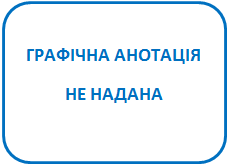Оцінка конкурентоспроможності економік країн Євразійського економічного союзу
DOI:
https://doi.org/10.15587/2706-5448.2022.267273Ключові слова:
Євразійський економічний союз, оцінка конкурентоспроможності, макроекономічні показники, індекс подібності, індекс несхожості, математична модельАнотація
Об’єктом дослідження є конкурентоспроможність економік країн Євразійського економічного союзу (ЄАЕС). Оцінка рівня конкурентоспроможності є однією з перспективних проблем сучасної економіки. У світі досі немає єдиних методик і стандартів визначення поняття «конкурентоспроможність економіки», методів її оцінки та факторів, що на неї впливають, що викликає багато питань щодо порівняння рівня розвитку та конкурентоспроможності світових економік.
Враховуючи порівняльні переваги економік, різні методологічні підходи можуть дати різні результати щодо конкурентної позиції певної країни. У ході дослідження автором представлено розроблену математичну модель розрахунку конкурентоспроможності показника подібності та несхожості, яка комплексно характеризує стан економіки країн Євразійського економічного союзу. Таким чином, порівняння міри подібності чи несхожості країн за різними методиками, безсумнівно, дасть вичерпне уявлення про їхню конкурентоспроможність, а також дозволить розробити відповідну та ефективну економічну політику.
Проведений у роботі аналіз динаміки індексу подібності та відмінності у зовнішньоекономічній діяльності Казахстану з країнами ЄАЕС за роки дозволяє встановити тенденцію, що спостерігається в цьому процесі, і, отже, визначити стратегію міжнародних економічних відносин на майбутнє.
Результати дослідження можуть бути використані державними органами, які приймають рішення у сфері торговельно-економічного та інвестиційного співробітництва.
Спонсор дослідження
- Presentation of research in the form of publication through financial support in the form of a grant from SUES (Support to Ukrainian Editorial Staff).
Посилання
- Porter, M. (1993). International competition. Moscow: Intern. relations, 51.
- Porter, M. (2000). Competition. Saint Petersburg-Moscow/Kyiv: Ed. house «Williams», 495.
- Kosherbayeva, A., Kylbayev, E., Sautbekov, D. (2022). Assessment of the competitiveness of the economies of the EAEU countries. Public Administration and Civil Service, 1 (80), 198–211. doi: https://doi.org/10.52123/1994-2370-2022-671
- Igonina, L. L. (2005). Investments. Moscow: «Economist» Economic Portal, 478. Available at: https://institutiones.com/download/books/1286-investicii-igonina-uchebnik.html
- Grechishkina, M. V., Ivakhnik, D. E. (2003). Vybor optimalnogo varianta investitcii (optimizatcionnyi podkhod). Financial management, 3. Available at: http://www.finman.ru/articles/2003/3/715.html
- Schuller, B. (2008). Globalization and Competitiveness of Nations. International Scientific Conference Proceedings. Kaunas University of Technology, Kaliningrad State Technical University, Riga Technical University.
- Margarian, A. Sh., Galoian, D. R. (2016). Otcenki konkurentosposobnosti ekonomiki stran Evraziiskogo ekonomicheskogo soiuza. Ekonomicheskaia nauka segodnia, 4, 172–177. Available at: https://cyberleninka.ru/article/n/otsenka-konkurentosposobnosti-ekonomik-stran-evraziyskogo-ekonomicheskogo-soyuza/pdf
- Petkovski, I., Fedajev, A., Bazen, J. (2022). Modelling Complex Relationships Between Sustainable Competitiveness and Digitalization. Journal of Competitiveness, 14 (2), 79–96. doi: https://doi.org/10.7441/joc.2022.02.05
- Olczyk, M., Kuc-Czarnecka, M., Saltelli, A. (2022). Changes in the Global Competitiveness Index 4.0 Methodology: The Improved Approach of Competitiveness Benchmarking. Journal of Competitiveness, 14 (1), 118–135. doi: https://doi.org/10.7441/joc.2022.01.07
- Stankovic, J. J., Marjanovic, I., Drezgic, S., Popovic, Z. (2021). The Digital Competitiveness of European Countries: A Multiple-Criteria Approach. Journal of Competitiveness, 13 (2), 117–134. doi: https://doi.org/10.7441/joc.2021.02.07
- Androniceanu, A.-M., Kinnunen, J., Georgescu, I., Androniceanu, A. (2020). A Multidimensional Approach to Competitiveness, Innovation and Well-Being in the EU Using Canonical Correlation Analysis. Journal of Competitiveness, 12 (4), 5–21. doi: https://doi.org/10.7441/joc.2020.04.01
- Simionescu, M., Pelinescu, E., Khouri, S., Bilan, S. (2021). The Main Drivers of Competitiveness in the EU-28 Countries. Journal of Competitiveness, 13 (1), 129–145. doi: https://doi.org/10.7441/joc.2021.01.08
- Statistics of foreign and mutual trade. Bureau of National statistics of the Agency for Strategic planning and reforms of the Republic of Kazakhstan. Available at: https://www.stat.gov.kz/

##submission.downloads##
Опубліковано
Як цитувати
Номер
Розділ
Ліцензія
Авторське право (c) 2022 Bakytkan Dauletbakov, Galym Dauletbakov

Ця робота ліцензується відповідно до Creative Commons Attribution 4.0 International License.
Закріплення та умови передачі авторських прав (ідентифікація авторства) здійснюється у Ліцензійному договорі. Зокрема, автори залишають за собою право на авторство свого рукопису та передають журналу право першої публікації цієї роботи на умовах ліцензії Creative Commons CC BY. При цьому вони мають право укладати самостійно додаткові угоди, що стосуються неексклюзивного поширення роботи у тому вигляді, в якому вона була опублікована цим журналом, але за умови збереження посилання на першу публікацію статті в цьому журналі.








